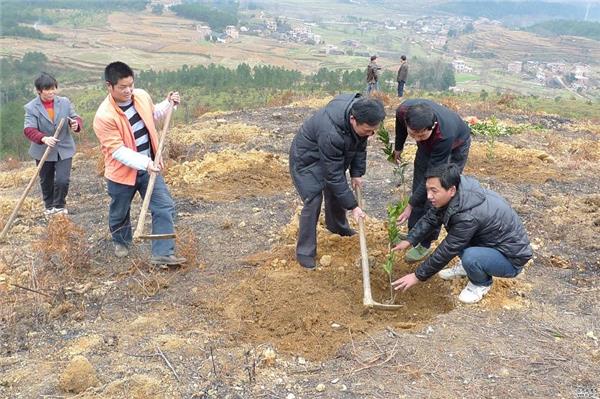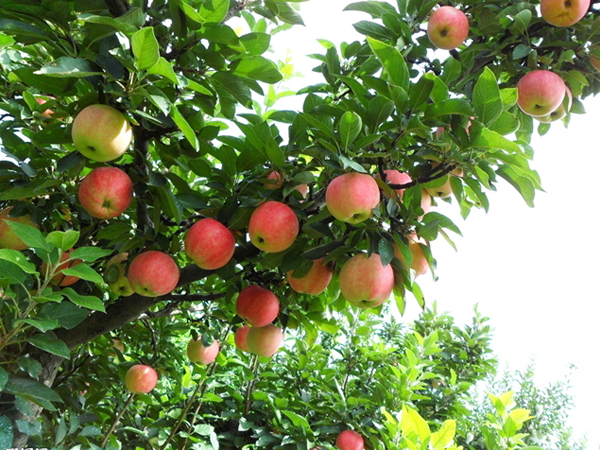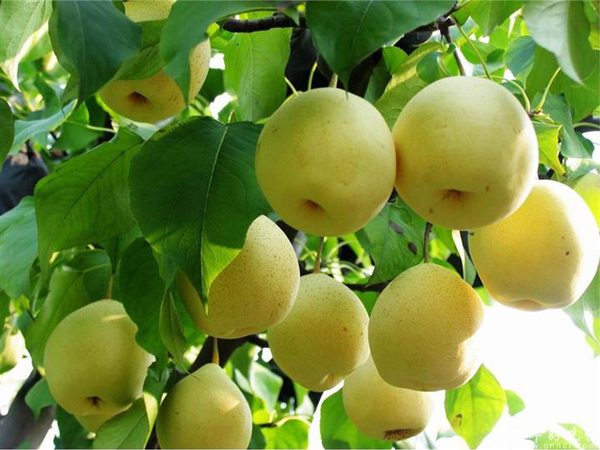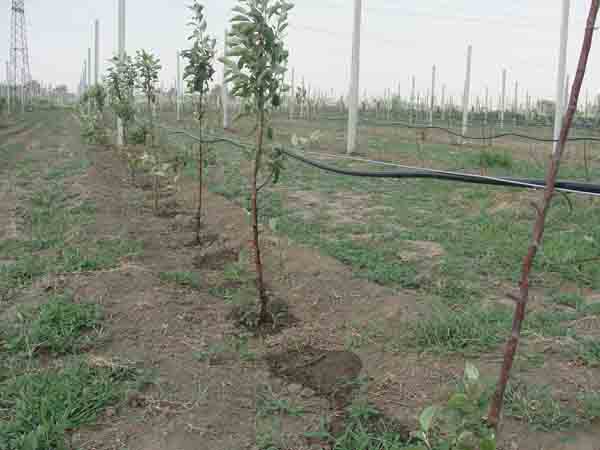Detailed explanation of cultivation techniques of fruit trees
In the spring planting period of fruit trees, although the temperature is relatively warm, Rain Water is more, the humidity is high, and the survival rate is high after planting, it is easy to grow new roots and shoots, but if the method is improper, the survival rate will be low after planting. The methods and techniques of spring planting of fruit trees are introduced as follows. There are two specific examples that you can refer to.
Planting methods and techniques of Fruit trees in Spring
First, select the seedlings. Select high-quality seedlings with no diseases and insect pests, strong growth, well-developed roots, short internodes and no water loss, and the leaves on the trunk and branches are dark green and shiny.
Second, apply enough fertilizer to fix the root. 7 to 15 days before planting, the mountain orchard applied 0.5 kg of rotten bean bran or peanut bran or 10 to 15 kg of pig and cow fertilizer under the topsoil of the fruit mound on the basis of deep turning over the planting hole. The fertilizer should be fully mixed with the soil and should not be in direct contact with the root group to prevent burning of the root group, that is, the fertilizer should be applied at 30 to 35 cm from the planting point, or below the planting point, 35 to 40 m below the topsoil, and break the soil at the planting point, and sprinkle a small amount of fully rotten dung water 3 to 5 days before planting, so that it can be mixed well with the soil and absorbed.

Third, seedling finishing. After the seedlings are transported back, they should be placed in a cool place to keep the roots moist. If the number of seedlings is large, they should be graded according to size, while grading, while pruning the root groups and branches properly. Cut off rotten, dry and residual roots before planting. Cut the rotten roots until they are white, and cut off some of them even if they are good. Branches that are too weak or misplaced should also be cut off. When the weather is too dry after long-distance transportation or planting, some leaves should be cut off appropriately to reduce water evaporation.
Fourth, planting. When planting, the roots should be straightened and straightened out, and distributed uniformly and slightly obliquely downward in all directions in the planting hole. if falling roots occur in several layers from the straight roots, they should be straightened out layer by layer, fill with fine soil layer by layer, and compacted with hands, but do not exert too much force to prevent the roots from breaking. In the middle of the soil filling, gently lift the seedlings to the soil, straighten the roots, straighten the plants, and then stamp the soil with your feet, covering the soil cannot raise the marriage interface. Props should also be set up to prevent shaking and injuring the roots.
Fifth, watering in time. After the saplings are planted in the soil, they are immediately drenched with fixed root water and covered with grass to moisturize. Water should be drenched once a day within 5 days after planting, and once every other day after 5 days. After 20 to 30 days, the topsoil can be gently removed and examined. If there are new roots sprouting, a thin rotten manure can be applied.

Mulberry seedling planting method
1. Before planting flat ditches in sloping and semi-arid paddy fields and border planting in paddy fields, dig planting ditches according to the predetermined plant row spacing, and then dig the planting ditches deeply. The ditches are 30cm wide, 50cm wide, 35cm deep, pile the topsoil and inner soil separately, and then dig 15cm deep in the ditch to loosen the bottom soil. The mulberry root planting ditch should be connected with the drainage ditch around the mulberry garden and can be drained in time after rain.
2. Base fertilizer: apply base fertilizer when planting, and it is better to apply organic fertilizer, such as garbage, barnyard manure, miscellaneous manure, etc., applying 1500Mu2000 kg per mu, and can also be mixed with 50kg calcium superphosphate base fertilizer and mix well with the excavated soil.
3. Pruning seedling roots: the overlong and damaged mulberry roots are trimmed before planting, leaving the roots about 15 cm long to get rid of disease and insect seedlings, and adding phosphate fertilizer and yellow mud slurry roots before planting large and small seedlings separately to improve the survival rate.
4. Planting: fill part of the topsoil in the planting ditch to cover the base fertilizer. When planting, first draw the planting rope marked with row spacing, put the mulberry seedling into the planting ditch, stretch the seedling root, reach the seedling root extension, then fill the topsoil into the root, hold the seedling stem, gently lift it up and down, so that the soil particles fully fill the root gap, pour a spoonful of water, human and animal dung, and then knock the whole heart soil into the ditch. The planting depth is 5cm and 6cm, and then the stem of the seedling is cut according to the shape of the tree.
5. Watering and drainage: timely watering during post-planting drought, timely drainage after waterlogging, and timely filling when missing seedlings are found.

How to plant ginseng fruit trees
1. Planting place
Generally, we should choose the land with sufficient sunshine and rich soil, which is convenient for water drainage and irrigation, and it is also very good to plant fewer germs in mountain ridges. The width of the single row is 60cm, the double row is 100cm, the plant spacing is 40cm, the hole is dug fine, about 1500 plants per mu are planted, and it is best to sprinkle some pest control drugs in the hole before applying basic fertilizer.
2. Pruning
The sprouting ability of ginseng fruit branches is very strong. Between 10 cm and 20 cm, 4 branches of ginseng are left as fruiting branches, and the rest of the branches are cut off to raise seedlings, sow or be used as livestock and poultry feed. After flowering and fruiting, only 2 fruits are left in each bouquet of flowers and fruits, so that the fruit is large, the quality is good and the selling price is high.
3. Watering
Ginseng fruit is neither drought-resistant nor waterlogged. Potted ginseng fruit should keep the soil moist and have adequate water supply during the fruit expansion period. Generally, it is appropriate to water every day in summer, in the morning or evening; in spring and autumn, every other day, in the morning, evening or noon; and in winter, every 3 times every 4 days, it is appropriate to water at noon.
4. Pest control
Ginseng fruit is prone to diseases in high temperature season and rainy season. The main diseases are Botrytis cinerea and virus disease. if you find the disease, you can spray 800 times of Nonglieling, or 800 times of Scarlett, or 600 times of virus An and virus K600. The main insect pests are aphids, whitefly, red spider and tea yellow cochlea, which can be sprayed in time, such as 800x solution of paracetamol or 1500 times of insecticide.

5. Scaffolding and plastic surgery
Ginseng fruit stem is soft, potted ginseng fruit should pay special attention to scaffolding and shaping. Generally, each basin should use four long 60cm smooth bamboo poles or twigs to insert around the basin (into the soil 10cm), the upper part is made of iron wire round, square or oval, and the size of the basin mouth is the same, with a rope or thin iron wire, and then use plastic skin, hemp skin, etc., to bind the stem on the support, the stem should be upright, loose and tight moderate. It should be noted that only 4-6 strong flowers should be retained on each inflorescence, and all the other flowers should be removed; when the fruit grows to the size of the bean grain, the fruit should be fixed, and 4 fruits should be reserved for each side branch. At the same time, to choose the flowers and fruits distributed around and at the top of the basin, the distribution should be uniform, the size should be consistent, and the fruit shape should be beautiful in order to improve its ornamental.
It is appropriate to water it at noon.
4. Pest control
Ginseng fruit is prone to diseases in high temperature season and rainy season. The main diseases are Botrytis cinerea and virus disease. if you find the disease, you can spray 800 times of Nonglieling, or 800 times of Scarlett, or 600 times of virus An and virus K600. The main insect pests are aphids, whitefly, red spider and tea yellow cochlea, which can be sprayed in time, such as 800x solution of paracetamol or 1500 times of insecticide.

5. Scaffolding and plastic surgery
Ginseng fruit stem is soft, potted ginseng fruit should pay special attention to scaffolding and shaping. Generally, each basin should use four long 60cm smooth bamboo poles or twigs to insert around the basin (into the soil 10cm), the upper part is made of iron wire round, square or oval, and the size of the basin mouth is the same, with a rope or thin iron wire, and then use plastic skin, hemp skin, etc., to bind the stem on the support, the stem should be upright, loose and tight moderate. It should be noted that only 4-6 strong flowers should be retained on each inflorescence, and all the other flowers should be removed; when the fruit grows to the size of the bean grain, the fruit should be fixed, and 4 fruits should be reserved for each side branch. At the same time, to choose the flowers and fruits distributed around and at the top of the basin, the distribution should be uniform, the size should be consistent, and the fruit shape should be beautiful in order to improve its ornamental.
Related
- Wuhan Hospital Iron Tree Blooming Result Was Instantly Frightened by the Gardener Master
- Which variety of camellia is the most fragrant and best? Which one do you like best?
- What is the small blue coat, the breeding methods and matters needing attention of the succulent plant
- Dormancy time and maintenance management of succulent plants during dormancy
- Minas succulent how to raise, Minas succulent plant pictures
- What are the varieties of winter succulent plants
- How to raise succulent plants in twelve rolls? let's take a look at some experience of breeding twelve rolls.
- Attention should be paid to water control for succulent plants during dormant period (winter and summer)
- Watering experience of twelve rolls of succulent plants
- Techniques for fertilizing succulent plants. An article will let you know how to fertilize succulent plants.



